It’s possible to filter your indoor air with the right air purifying plants. The results are so proven that even NASA has concluded that the plants you choose for your home make a difference.
Here are some of the best plants that will go to work making your indoor environment cleaner.
1. Peace Lily
One popular choice for an indoor houseplant is a Peace Lily.
It’s a pretty plant even when it’s not blooming, and its flowers are pure white and can be very stunning against the dark green leaves.
Peace lilies can help keep your air free of ammonia, formaldehyde, benzene trichloroethylene, xylene, and toluene, making it one of the most comprehensive indoor plants you can choose.
Poor indoor air quality is a common problem, and taking the simple step of adding an indoor plant like this is one way to clean it up.
Caring for it: Peace Lilies seem like they’re designed for indoor living, and can thrive without consistent watering and little sunlight. You’ll want to keep the soil moist, but not to the point of overwatering. It may sound counterintuitive but to encourage flower blooming you may need to move it away from sunlight.
2. Rubber Plant
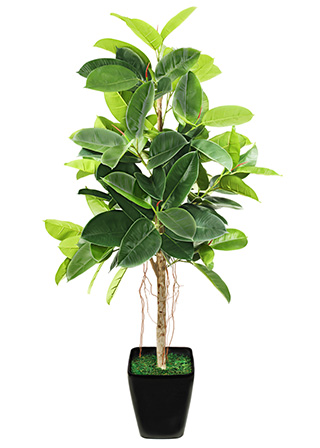
An ant may need high hopes to lift a rubber tree plant, and with the larger ones you may want to enlist the help of a friend to move it to a new location, but it’s worth the effort.
There are many different subspecies of the rubber plant, and each one will have similar benefits, so you can choose the one that looks best to you. The oxygen output of a rubber plant is higher than most other indoor plants, allowing it to purify more air in less time.
Caring for it: Keep your rubber plant near a window, as it likes light just not necessarily direct light. Use a high quality soil, and water it only occasionally.
3. Bamboo Palm
This is one of the best plants to have in your home thanks to its ability to remove toxins like benzene and trichloroethylene. They can get pretty big if you keep repotting them, so they can fill up some unused space in your home as well.
You’ll want to have a Bamboo Palm in your home if you live in a climate with harsh winters. It will help to restore some of the moisture that tends to dry up thanks to indoor heating units. They’re also good at removing formaldehyde, which could be making you sick.
Caring for it: Put your Bamboo Palm in a location that gets some sunshine, but mostly is shady. Keep the soil moist, but be careful not to overwater it.
4. Chinese Evergreens
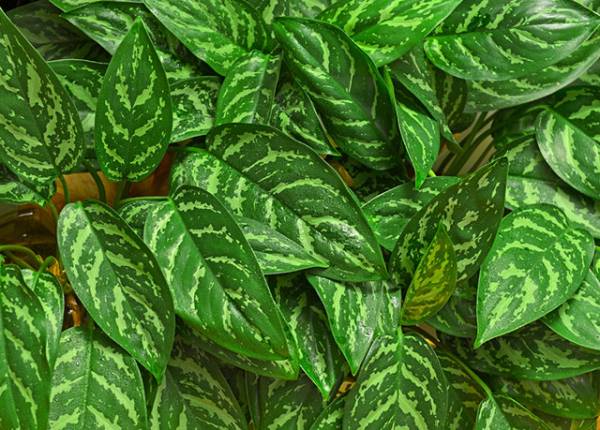
One way to get rid of benzene and formaldehyde in your home is to purchase a Chinese Evergreen plant. They are thought to bring good luck and were used as decoration in Asian countries long before they made it west.
The longer you keep your Chinese Evergreen in your home, the better it will do at removing indoor toxins. That’s incentive enough to keep this plant as long as possible, and when they’re this easy to care for it’s not too hard to do.
Caring for it: These plants don’t need a lot of light in order to do just fine, which is another reason why they’re a good candidate for indoor use. In fact, you’ll want to keep them out of direct sunlight. They only need an occasional watering when you notice their soil has become dry.
5. Broadleaf Lady Palm
You’ll want to make sure you have enough room for this plant, as it can grow very tall, but will take several years to reach its full height. This is a plant that has been cultivated for indoor use and is relatively easy to take care of.
While it didn’t show an ability to filter out benzene or trichloroethylene, Broadleaf Lady Palm did prove to be effective at soaking up formaldehyde and ammonia from the air.
Caring for it: This is one plant that will thrive pretty much anywhere you put it, but seems to do best near a window where it can get indirect light. Keep the soil moist, and when you water it make sure you give it enough water so that all of the roots can have a drink.
6. Spider Plant
Spider plants are a very popular choice for an indoor plant, and their popularity only grew when studies confirmed just how good it is at freshening indoor air. They excel at removing formaldehyde, as well as xylene and toluene from the home or office.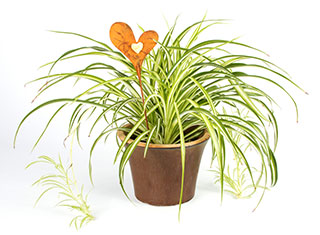
Spider plants get along just fine indoors, and their easy care means you’ll have a large margin for error, making them a good choice if you this will be one of your first indoor plants.
Caring for it: Spider plants are relatively easy to take care of, the main thing you’ll want to take concern with is potting and repotting them. You’ll want to repot them each spring to ensure they have room to grow for the following year.
7. Creeping Lilyturf
Despite the somewhat unattractive name, Creeping Lilyturf is an evergreen plant that will look great in your home all year long, while protecting you from indoor contaminants such as formaldehyde and ammonia.
Although you’ll often see this used as an outdoor plant, it thrives indoors as well and doesn’t require much in the way of upkeep. It has a sprawling nature, hence the name, and can require a big berth, often growing wider than it is tall. It produces lavender-colored flowers that will brighten your day in the summer and fall.
Caring for it: Keep your Creeping Lily Turf in a spot that gets a mix of sun and shade, and water it weekly unless it’s really hot outside, which will require more frequent waterings.
8. Devil’s Ivy
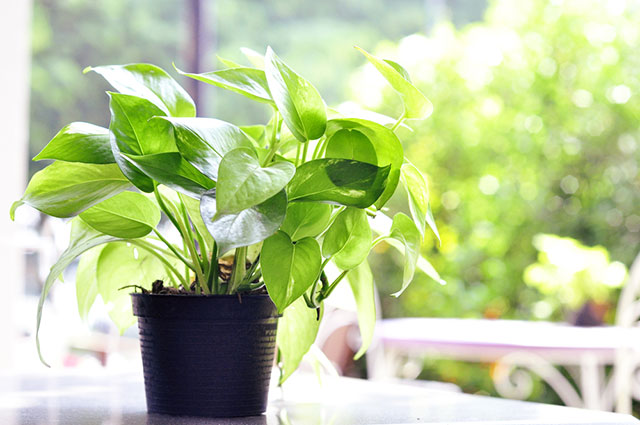
Don’t let the name fool you, this plant is an angel for its ability to make the air in your home more breathable.
It takes care of at least four different toxic substances that could be in your home.
You can use this plant as decoration by directing the vines where you want them to go.
As long as they’re given something to cling to they can climb a window giving your home an earthy look.
Caring for it: Devil’s Ivy likes the sun, just not directly, so place it near a window but out of the direct sun. You don’t want to give it too much water, and you can let the soil dry up a bit between waterings. This is much better than giving it too much and keeping the soil soggy.
9. Ficus Tree
The Ficus tree is one of the more common indoor plants and is typically found in offices across the country. The appearance resembles an outdoor tree, which is why this is one of the more popular choices.
It’s good at removing toxins from the air and has been proven to remove airborne formaldehyde and other poisons. You may find that the plant outgrows the area you’ve designated for it, at which point it will need to be pruned down to size.
Caring for it: Although Ficus trees are pretty forgiving, you’ll want to care for it as best you can so that it thrives and looks its best each day. It will do well in a shady or sunny spot, but it’s best not to put it in direct sunlight during the warmer months.
10. Snake Plant
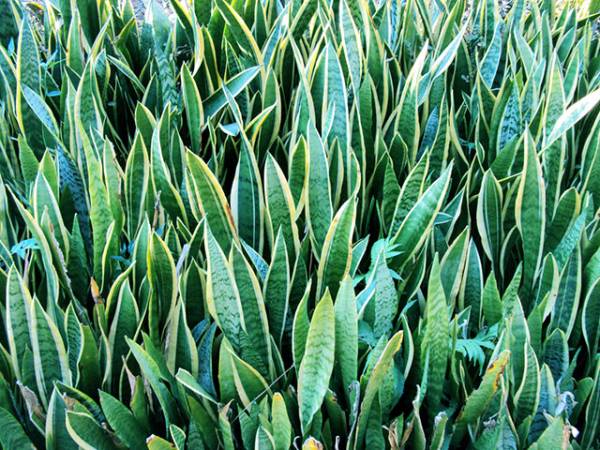
Snake Plant is one of the more beautiful indoor plants, and its leaves do resemble snakes and twist and curl as they grow upwards. This is a plant you’ll want to have in your home because it offers some of the broadest protection from indoor contaminants, and it pairs well with a Peace Lily.
If you make a mistake caring for your Snake Plant, don’t worry. It’s a very forgiving plant, and as long as you make the necessary corrections it will be all right.
Caring for it: Snake Plants love the light, and you’ll want to make sure that they’re getting enough of it. They don’t need to be watered very often, as their leaves hold water much like a cactus.
11. Moth Orchid
Moth Orchids are especially good at taking care of xylene and toluene, two chemicals that generally find their way into homes due to a large number of household items that contain them.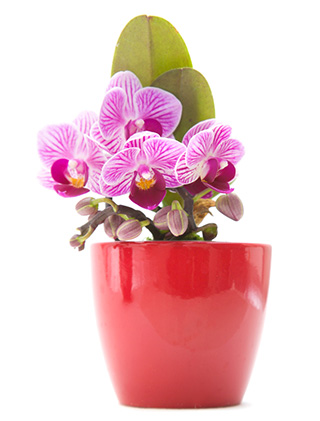
Everything from fingernail polish to glues, paint to paint thinner could have xylene and toluene in them. This means it’s extra important to have plants that can clean up the air making it safer to breathe.
Caring for it: You definitely don’t want to overwater your Moth Orchid. Keep your watering to once a week for the best results. This is one of the pickier indoor plants and is recommended for advanced gardeners that are familiar with potting plants and specific care instructions.
12. Pleomele
Here’s a pretty plant that would love a spot in your home. It’s also known as Song of India and has a very distinct look to it.
This is one plant that you don’t want to miss out on, as it has been proven to be one of the best at removing several different indoor toxins, including xylene and trichloroethylene.
Caring for it: Pleomele is a sunlight lover, but make sure it’s not sitting in direct sunlight. You’ll want to water it differently depending on the season, but no matter what don’t overwater it or it could be susceptible to rotting. In the winter it needs less water than the warmer months.
13. Florist’s Daisy
These are some of the prettier plants you’ll see on our list, and because of their flowers are sure to be a plant you enjoy having in your home. But it’s not just pretty to look at, it’s also helping in removing half a dozen contaminants from indoor air.
The flowers bloom in late summer and into fall, and their flowers can be several different colors including pink, purple, red, yellow, and white.
Caring for it: These are sun lovers, and you can even put them in direct sunlight and they’ll do fine. Water them regularly, as needed, and they’ll thrive. You can begin the process outdoors, bringing them in when the weather gets cold and placing them in the sunniest spot in your home.
14. Cornstalk Dracaena
This plant is aptly named and resembles a cornstalk, while still maintaining an attractive enough appearance to add to the decor of your home. You’ll be happy it’s there because it will be helping to remove benzene, formaldehyde, and trichloroethylene from inside your home.
This makes a good starter plant for a first-timer when it comes to indoor gardening, as it can tolerate some neglect and other planting no-nos and still come out unscathed.
Caring for it: Keep your plant near a window so that it gets filtered light, but not direct sunlight. Water it enough so that the soil stays moist, but don’t go overboard, and it’s alright if the soil dries up a bit between waterings.
15. Barberton Daisy
These daisies will surely brighten your day when they’re in bloom, and the rest of the time the plant itself will be hard at work keeping your air clean.
They’re effective at cleaning up three different indoor pollutants, and whether or not you notice an immediate difference, your air will be cleaner, which makes a big difference over the long term.
This is an indoor/outdoor plant that you’ll want to place outdoors during the summer so that it can get the most sunshine.
Caring for it: Keep them well watered, and the soil moist. Place them in a sunny spot when they’re indoors.





Excellent post. You make it entertaining and you still care for to
keep it sensible. I cant wait to read much more from you. This
is actually a terrific web site.
Greetings! Very useful advice in this particular post! It’s the little changes that produce the greatest changes.
Thanks for sharing!